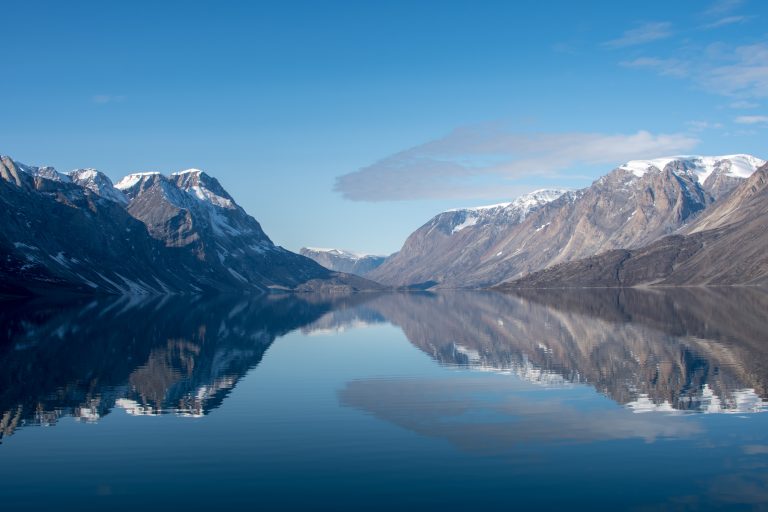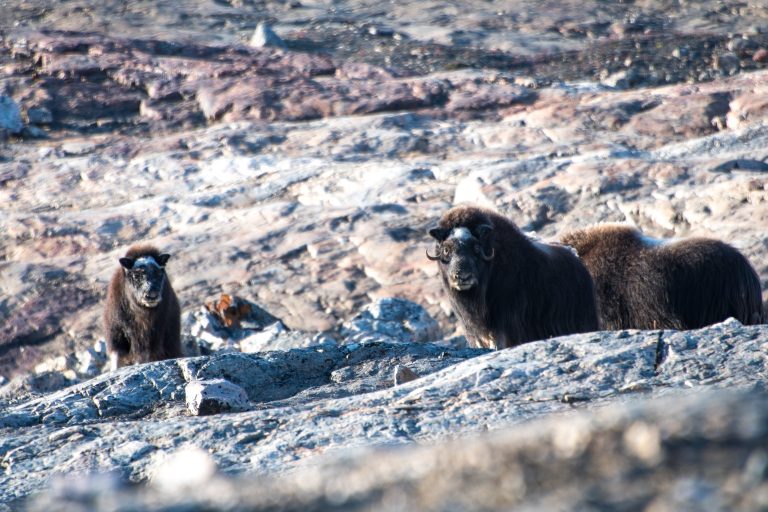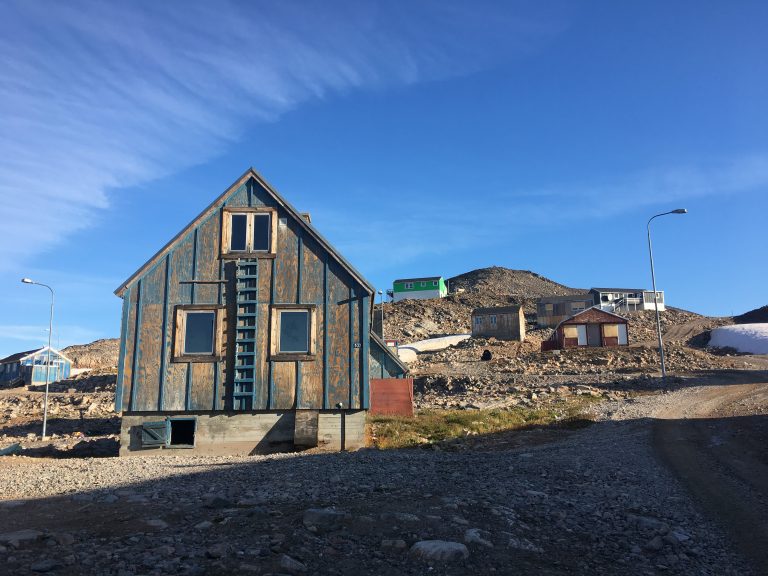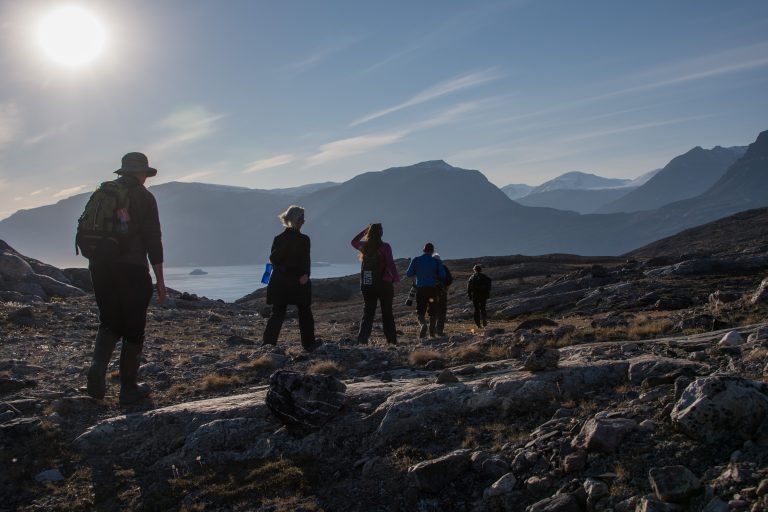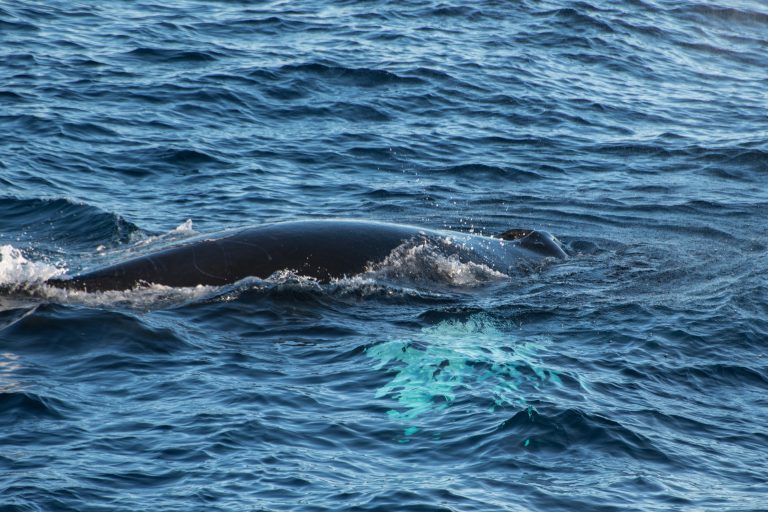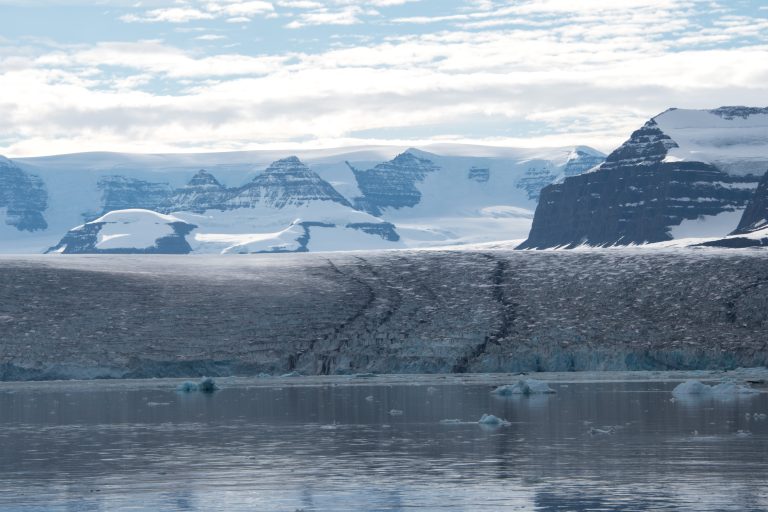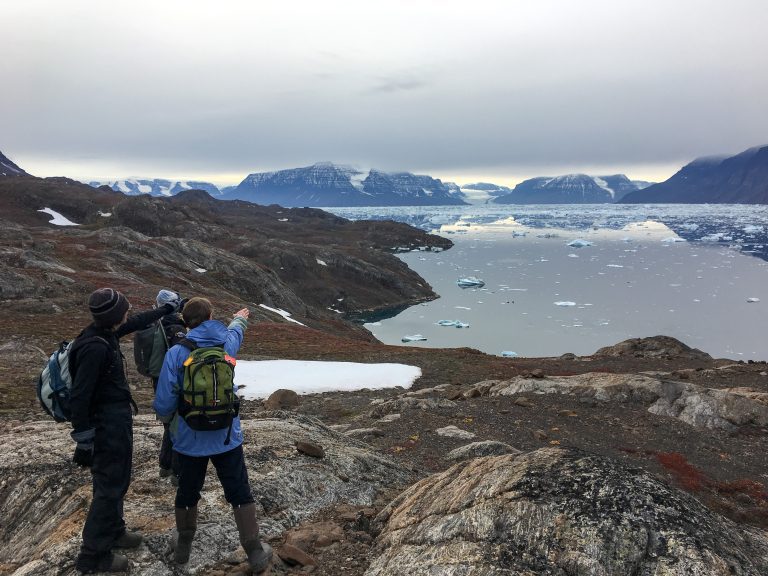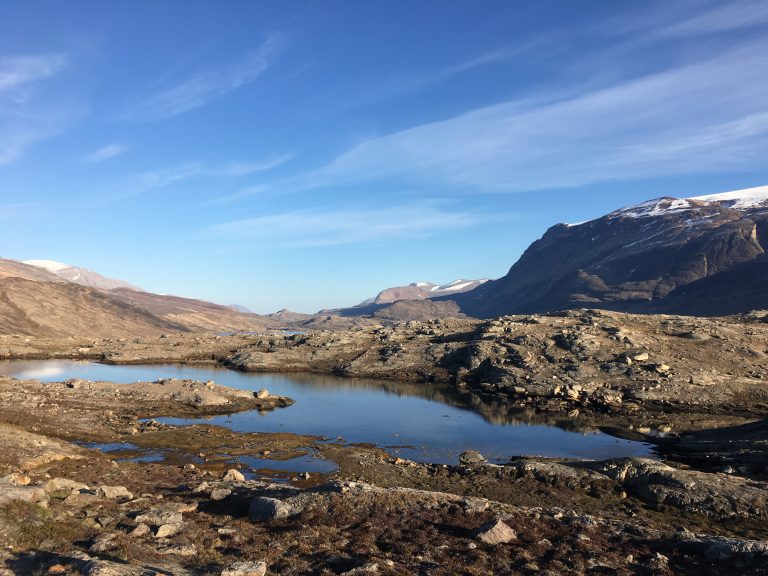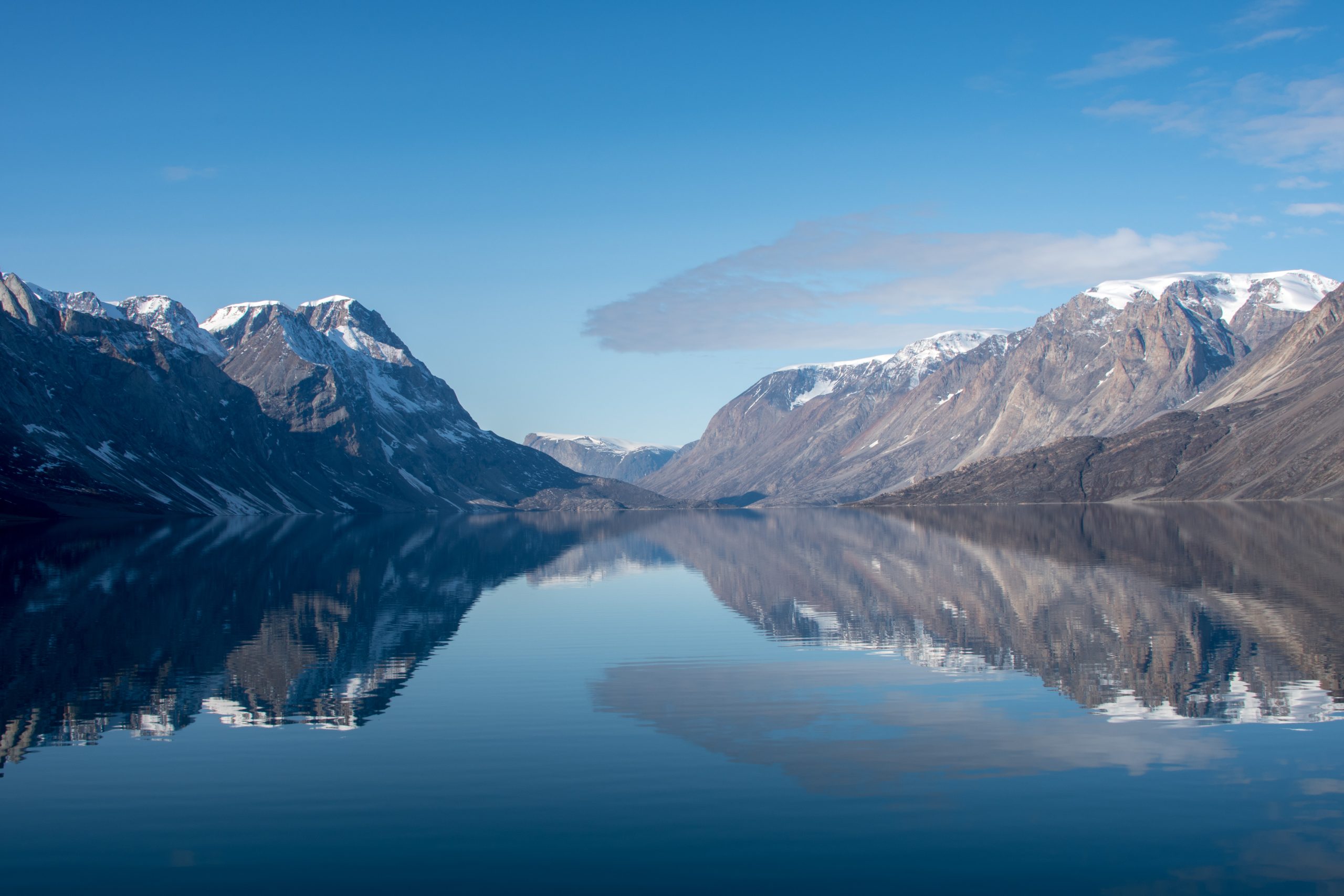
East & South Greenland Explorer - 21 Days
Aboard Plancius – 108 passengers
Explore the remote fjords and shorelines of East Greenland, seeing remains from Thule, Norse, and Viking cultures in addition to Arctic wildlife. East Greenland is among the most remote and least populated areas of the Arctic, a wild place of dramatic fjords, small Inuit settlements, and ancient remains from Viking and Thule cultures. Sail and explore the coastlines of this ruggedly beautiful region, enjoying its impressive rock formations and colossal icebergs while keeping an eye open for Arctic wildlife.
Itinerary
Day 1: Embarkation in Longyearbyen, Norway
You touch down in Longyearbyen, the administrative center of Spitsbergen, the largest island of the Svalbard archipelago. Enjoy strolling around this former mining town, whose parish church and Svalbard Museum make for fascinating attractions. Though the countryside appears stark, more than a hundred species of plants have been recorded in it. In the early evening the ship sails out of Isfjorden, where you might spot the first minke whale of your voyage.
Day 2-3: Onward to East Greenland
You may eventually see the jagged edge of the east Greenland sea ice flashing into sight ahead, depending on the conditions. Keep watch for whales and migrating seabirds here.
Day 4: Tundra, mountains, and icebergs
As you approach Greenland, you may sail through the sea ice into Foster Bay and land at Myggebugten. Beyond the old hunters’ hut (where Norwegian trappers hunted for polar bear and Arctic fox in the first half of the 20th century), there is a sprawling tundra populated by musk oxen, with geese floating the small lakes. From here you sail through Kaiser Franz Josef Fjord, surrounded by towering mountains and bright interior icebergs. An alternate route is Sofia Sound, a narrower waterway.
Day 5: The islands of Antarctic Sound
You arrive at Teufelschloss (Devil’s Castle), a mountain with layered geology. On the other side of the fjord is Blomsterbugt and the intended landing site. In the afternoon you head into Antarctic Sound, where you find the islands of Ruth, Maria, and Ella. Maria is the most likely spot for a landing.
Day 6: Sights of the Arctic autumn
The first half of the day you spend in Antarctic Havn, an extensive valley where you can spot groups of musk oxen. At this time of year, the sparse vegetation is dressed in the fiery colors of autumn.
Day 7: Arriving at Earth’s largest fjord
Today you reach Scoresbysund, sailing along the glaciated Volquart Boons Kyst. You may also enjoy a Zodiac cruise past one of the glacier fronts, along with a visit to the basalt columns and ice formations of Vikingebugt. We continue along the east coast of Milne deeper into the fjord.
Day 8: Enormous bergs, Arctic hares
In the morning you encounter colossal icebergs, some over 100 meters (328 feet) high and more than a kilometer (.62 mile) long. Most of them are grounded, as the fjord is only about 400 meters deep (1,312 feet). You then land near Sydkap, with fine views of Hall Bredning and a good shot of seeing Arctic hares. Later we will land at Satakajik and see the remains of Thule dwellings.
Day 9: Settlement at Scoresbysund
Today you make a tundra landing on Liverpool Land, in Hurry Inlet. The afternoon stop is Ittoqqortoormiit, the largest settlement in Scoresbysund at about five hundred inhabitants. At the post office you can buy stamps for your postcards, or just stroll around to see the sled dogs and drying skins of seals and musk oxen. In the afternoon you sail south, passing the picturesque landscapes of the Blosseville Coast.
Day 10: Thule huts and hiking spots
Our next stop is Stewart Island, an important hunting area for the people of Scoresby Sund. There are beautiful remains of Thule houses to be seen here. Rømer Fjord and Turner Sound, meanwhile, give us the opportunity to sail far inland, as they have no glacier front at their head and are not clogged with ice. This also provides us good hiking opportunities.
Day 11-13: All the pretty fjords
Sailing south along the East Greenland coast, we enter several fjords competing in beauty: d’Aunay, Nansen, and possibly either Ikersuaq or Kangertitsivaqmiit. Most of these fjords have glacier front at the head, but any of them can offer us a chance to see polar bears.
Day 14: Smalltown Greenland
Tasiilaq, once known as Angmagssalik (about 2,000 inhabitants) is our next port of call. This charming town is the center of East Greenland, boasting a museum where you can learn about the colorful local history of this incredibly remote area.
Day 15: In the steps of Nansen
We next sail south to land at Umivik, where the explorer Fridtjof Nansen ascended the Greenland ice sheet. Here you may even be able to walk a short distance in his steps.
Day 16: The valley of Mariedal
Today we circumnavigate Skjoldungen through one of the most spectacular fjords of southeast Greenland, then land at Qornoq to see houses from the Thule culture. We will then visit Mariedal and a beautiful valley where Greenlanders used to collect berries in autumn.
Day 17: Abandoned Greenland settlement
Moving on to Timmiarmiut, we see an abandoned Greenlandic settlement and will possibly sail into the fjord. Polar bears have sometimes been spotted here in the past. As an alternative, we may visit Igutsait to the south.
Day 18: Prins Christian Sund mountains
Our westward passing of the Prins Christian Sund is surrounded by mountains of over 1,000 meters (3,300 feet) and is one of the highlights of the voyage. We may make a landing at Svaerdfiskens Havn or in the evening at Ikigait, once known as Herjolfsnes, a former Norse settlement.
Day 19: Uunartoq hot spring
Today we reach Lichtenau, a lovely though nearly deserted Greenlandic village, where the Herrnhuters had a mission in the 18th century and where some of their large German-style buildings still remain. We will then try to get to Uunartoq, where we can bathe in a large hot spring surrounded by icebergs. Across at Vagar, we find the remains of a Norse homestead.
Day 20: Erik the Red’s base
In Eriksfjord we land at Ittileq, in a bay from which we can walk 4 km (2.5 miles) down a road to Igaliku (Gardar). In this small Greenlandic village, we can see the remains of a 13th-century Norse church, along with other ruins. Then in the afternoon, we plan to visit Bratthalid, the base of Erik the Red. This is a sub-Arctic area with birch trees, agriculture, and cattle. Later that evening, we arrive at Narssarsuaq for the final night of our voyage.
Day 21: Disembark in Narssarsuaq & Fly to Copenhagen
From the WW2-era airport of Narssarsuaq, we fly back to Copenhagen. Though our adventure has come to an end, we take home memories that will accompany us wherever the next adventure lies.
PLEASE NOTE: All itineraries are for guidance only. Programs may vary depending on ice, weather, and wildlife conditions. Landings are subject to site availabilities, permissions, and environmental concerns per AECO regulations. Official sailing plans and landing slots are scheduled with AECO prior to the start of the season, but the expedition leader determines the final plan. Flexibility is paramount for expedition cruises. The average cruising speed of our vessel is 10.5 knots.
Route Map
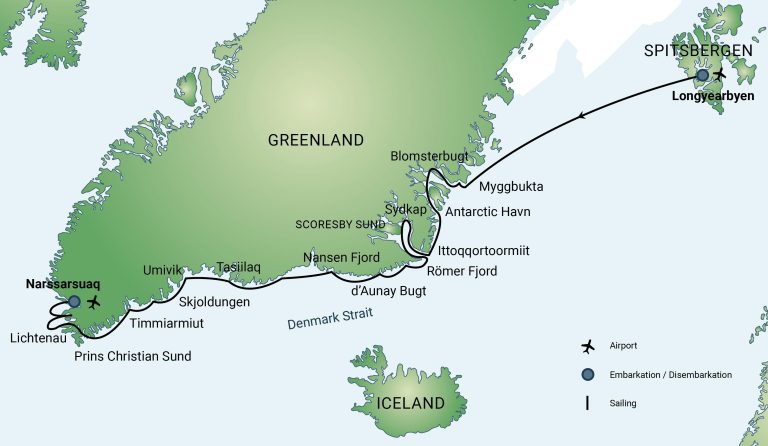
Cabin Descriptions

Superior
The Superior cabins are the most spacious and the only cabin category with a double bed. They are located on deck 4, 5 & 6, with most being on deck 5 & 6 (there is just 1 superior on deck 4). Features: 2 windows, 1 double bed, 1 sofa bed, Private shower & toilet, Desk & chair, Flatscreen TV, Telephone & WiFi (supplemented), Refrigerator, Coffee & tea maker, Hair dryer, Safe deposit box and Ample storage space.
226 – 248 square feet / 21 – 23 square meters.
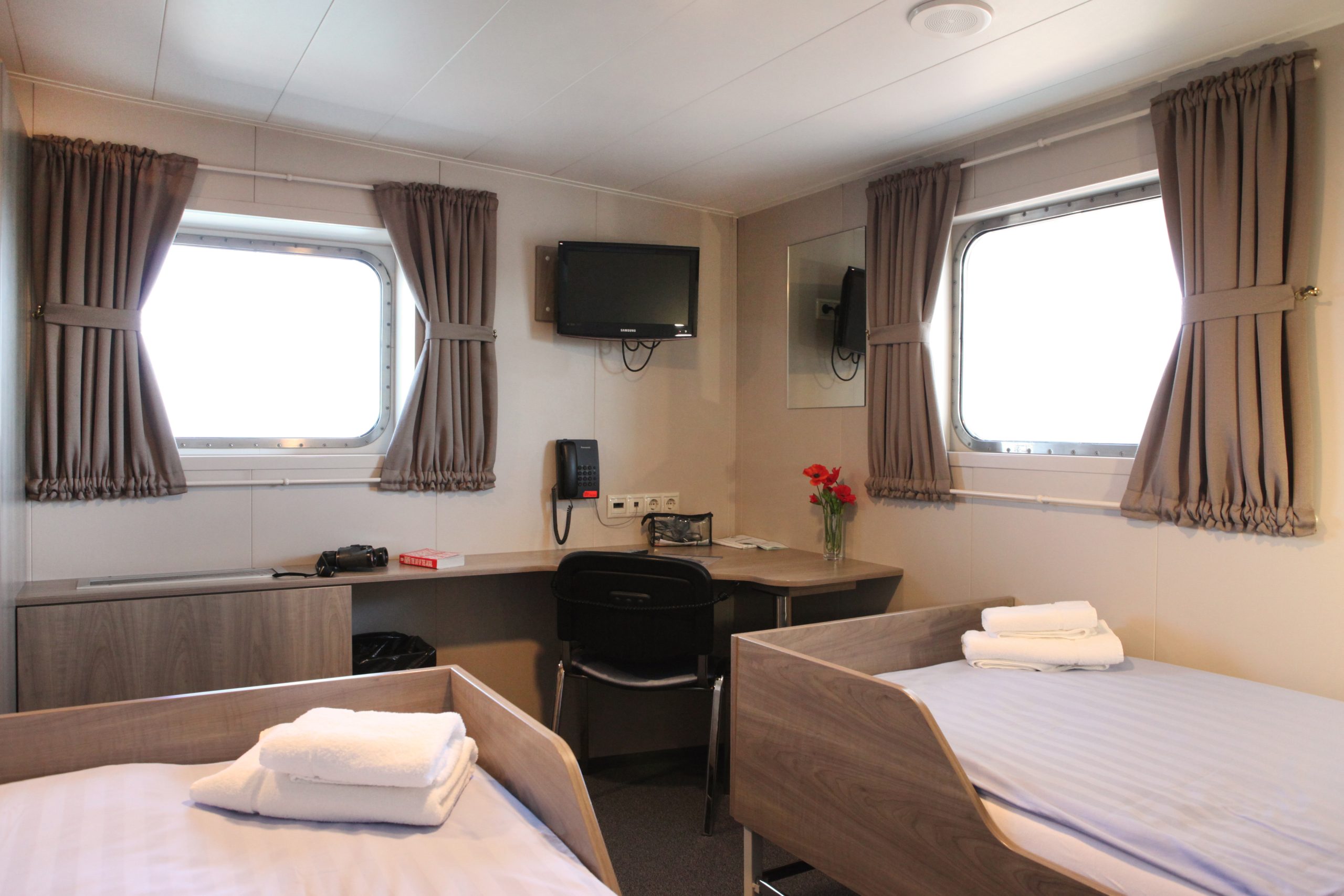
Twin Deluxe
There are just 2 Twin Deluxe cabins located towards the aft of deck 4. They are corner cabins and are slightly more spacious than the Twin Porthole/Window cabins. Features: 2 windows, 2 lower berths, Private shower & toilet, Desk & chair, Flatscreen TV, Telephone & WiFi (supplemented), Hair dryer, Ample storage space and Safe deposit box.
145 square feet / 13.5 square meters
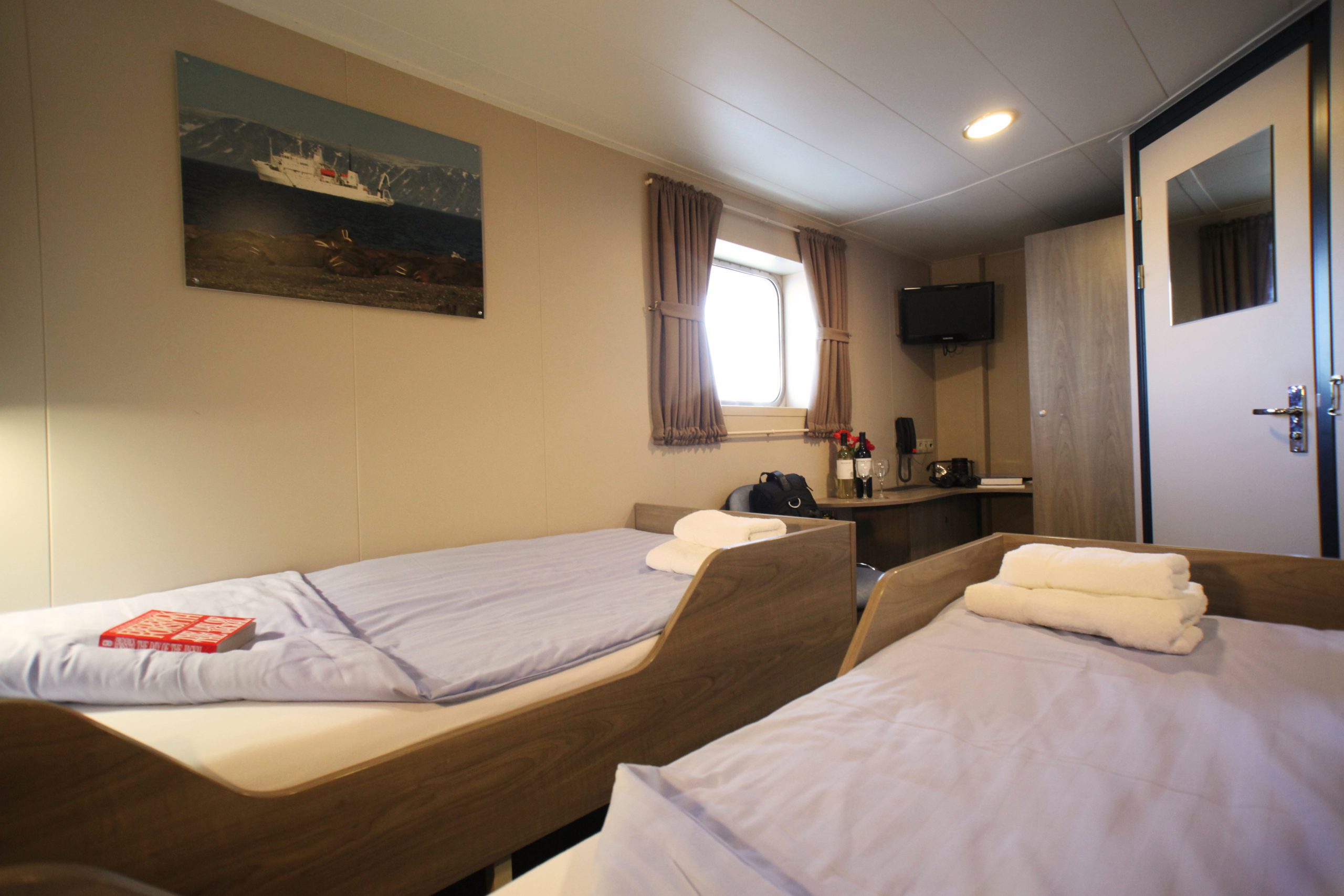
Twin Window
The most abundant cabin category on the ship, all located on deck 4. Features: 1 window, 2 lower berths, Private shower & toilet, Desk & chair, Flatscreen TV, Telephone & WiFi (supplemented), Hair dryer, Safe deposit box and Ample storage space.
135 – 145 square feet / 12.5 – 13.5 square meters
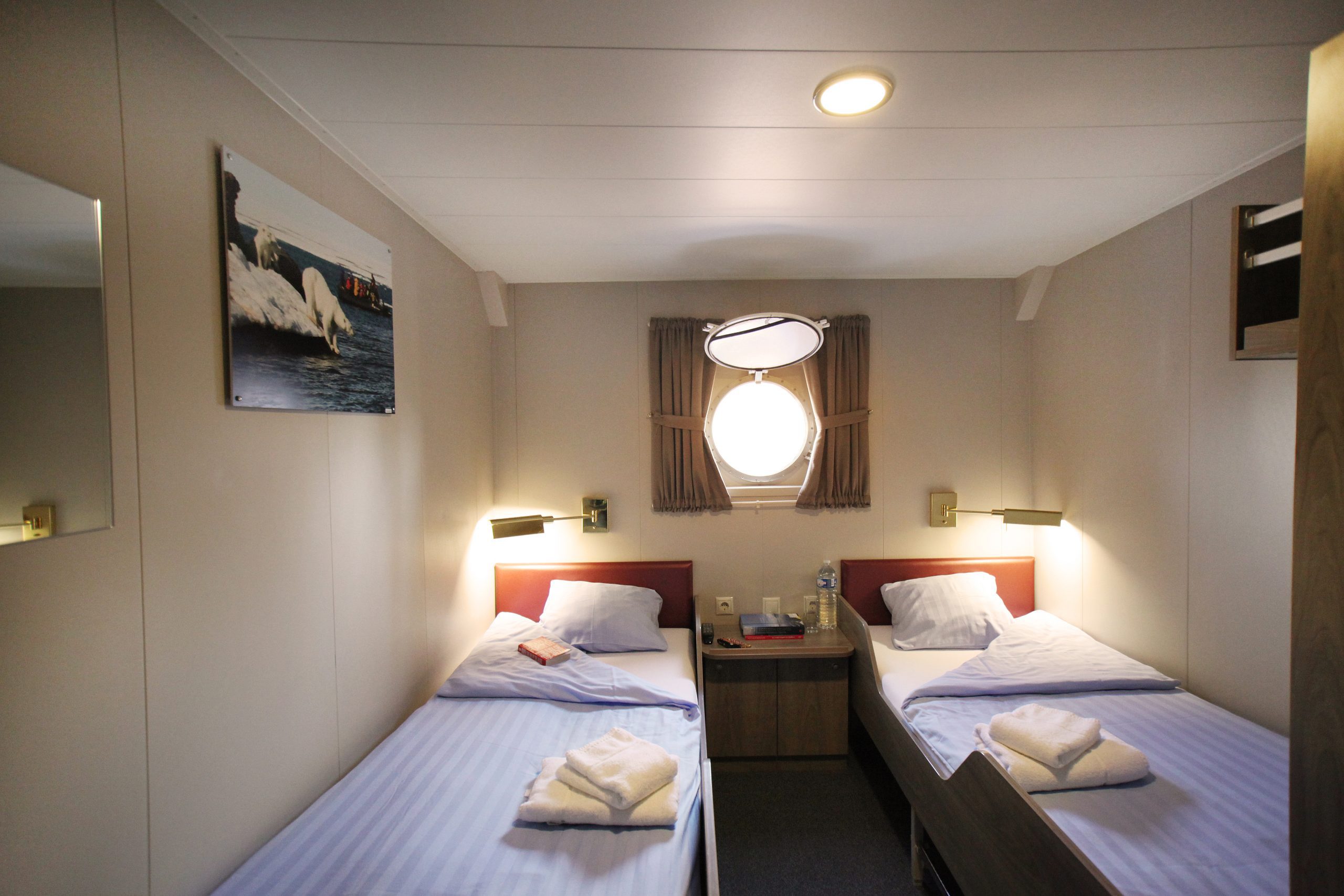
Twin Porthole
The nine Twin Porthole cabins are located on deck 3. Features: 1 porthole, 2 lower berths, Private shower & toilet, Desk & chair, Flatscreen TV, Telephone & WiFi (supplemented), Hair dryer, Safe deposit box and Ample storage space.
129 square feet / 12 square meters
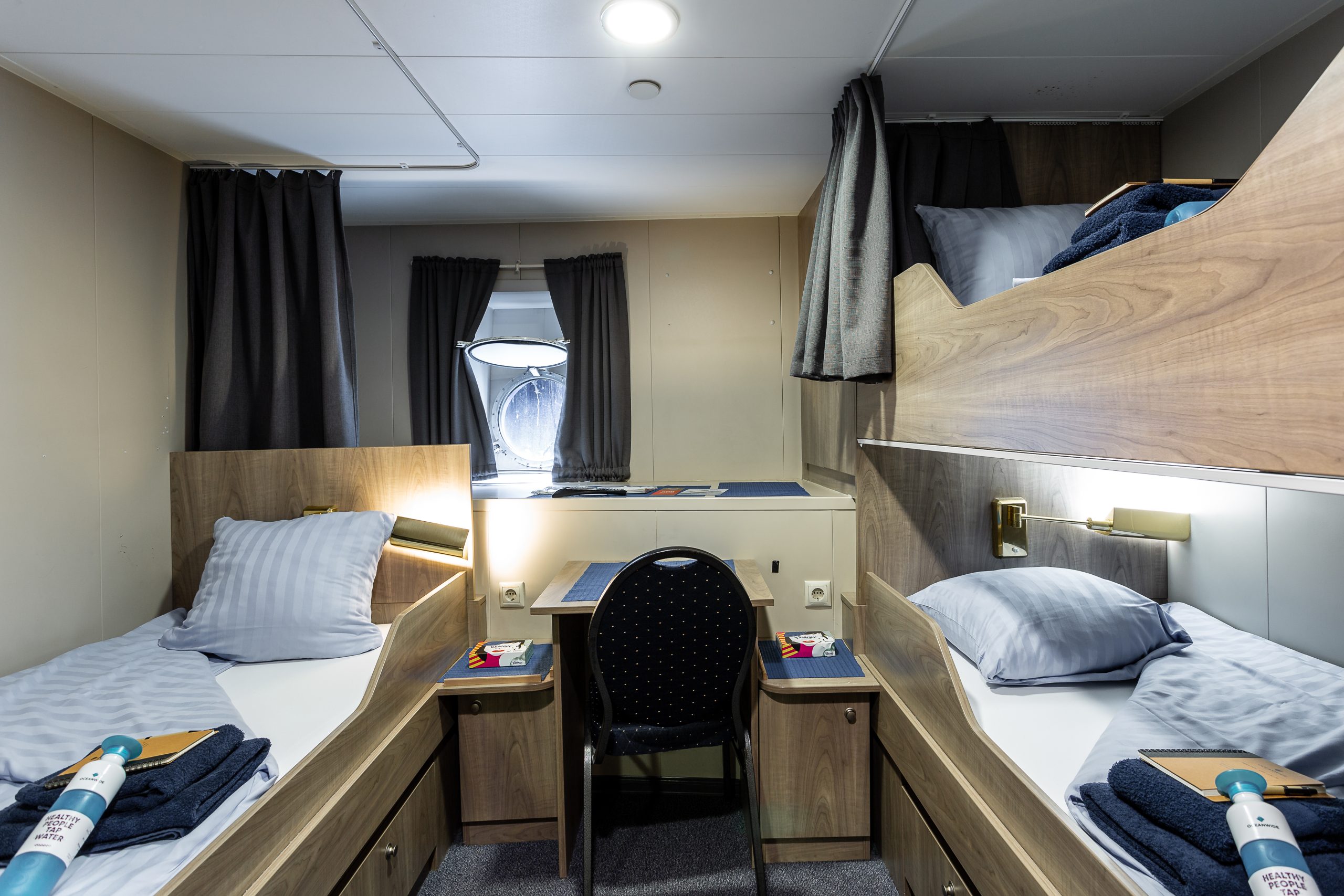
Triple Porthole
Just 1 Triple cabin located on deck 2. This cabin is suitable for families traveling with children, or passengers who do not require a twin or more luxurious cabin. Features: 1 porthole, 1 upper berth & 2 lower berths, Private shower & toilet, Desk & chair, Flatscreen TV, Telephone & WiFi (supplemented), Hair dryer, Safe deposit box and Ample storage space.
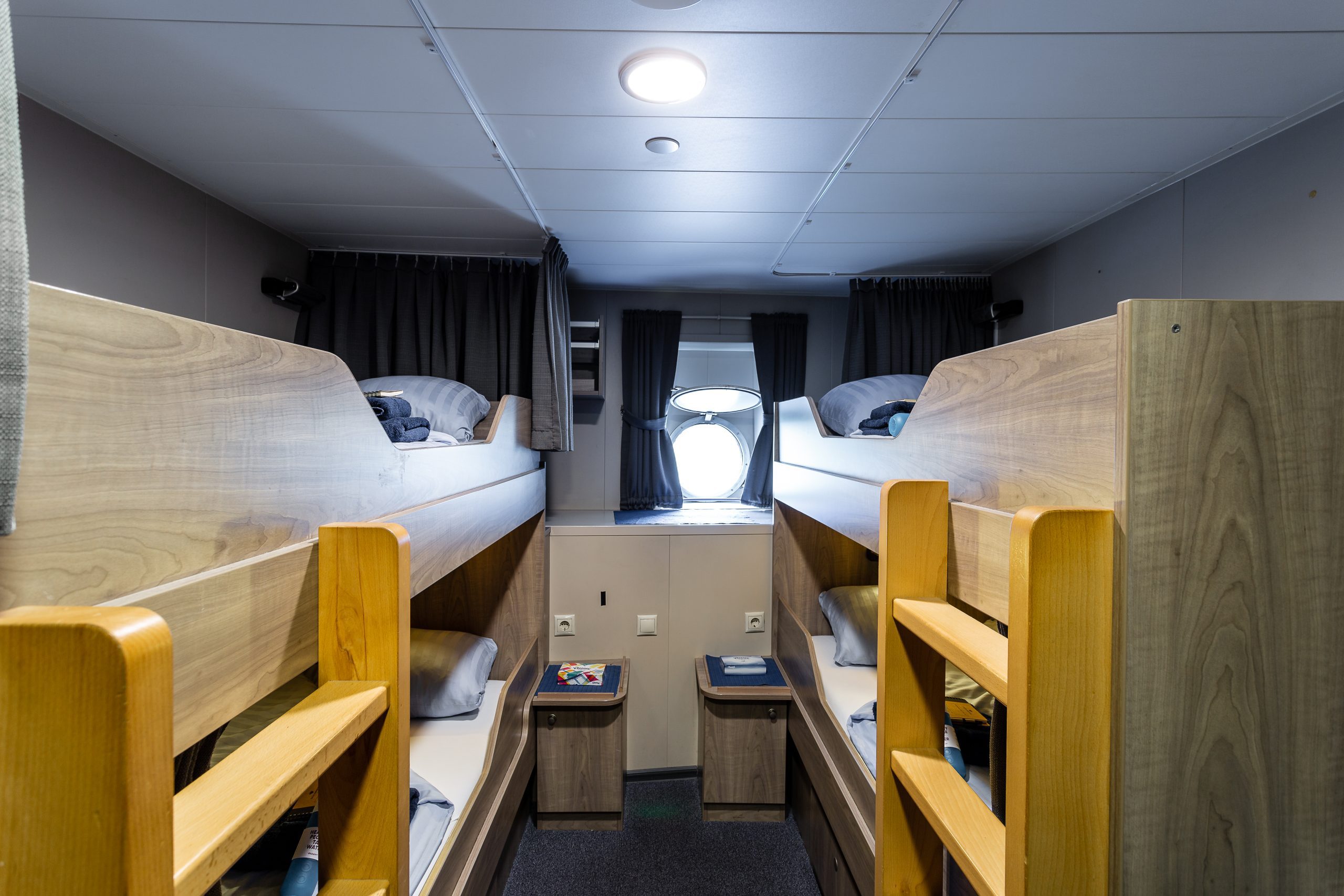
Quad Porthole
There are 4 Quad cabins on deck 2. This cabin is suitable for families traveling with children, or passengers who do not require a twin or more luxurious cabin. Features: 1 porthole, 2 upper berths & 2 lower berths, Private shower & toilet, Desk & chair, Flatscreen TV, Telephone & WiFi (supplemented), Hair dryer, Safe deposit box and Ample storage space.
129 square feet / 12 square meters
Deck Plan
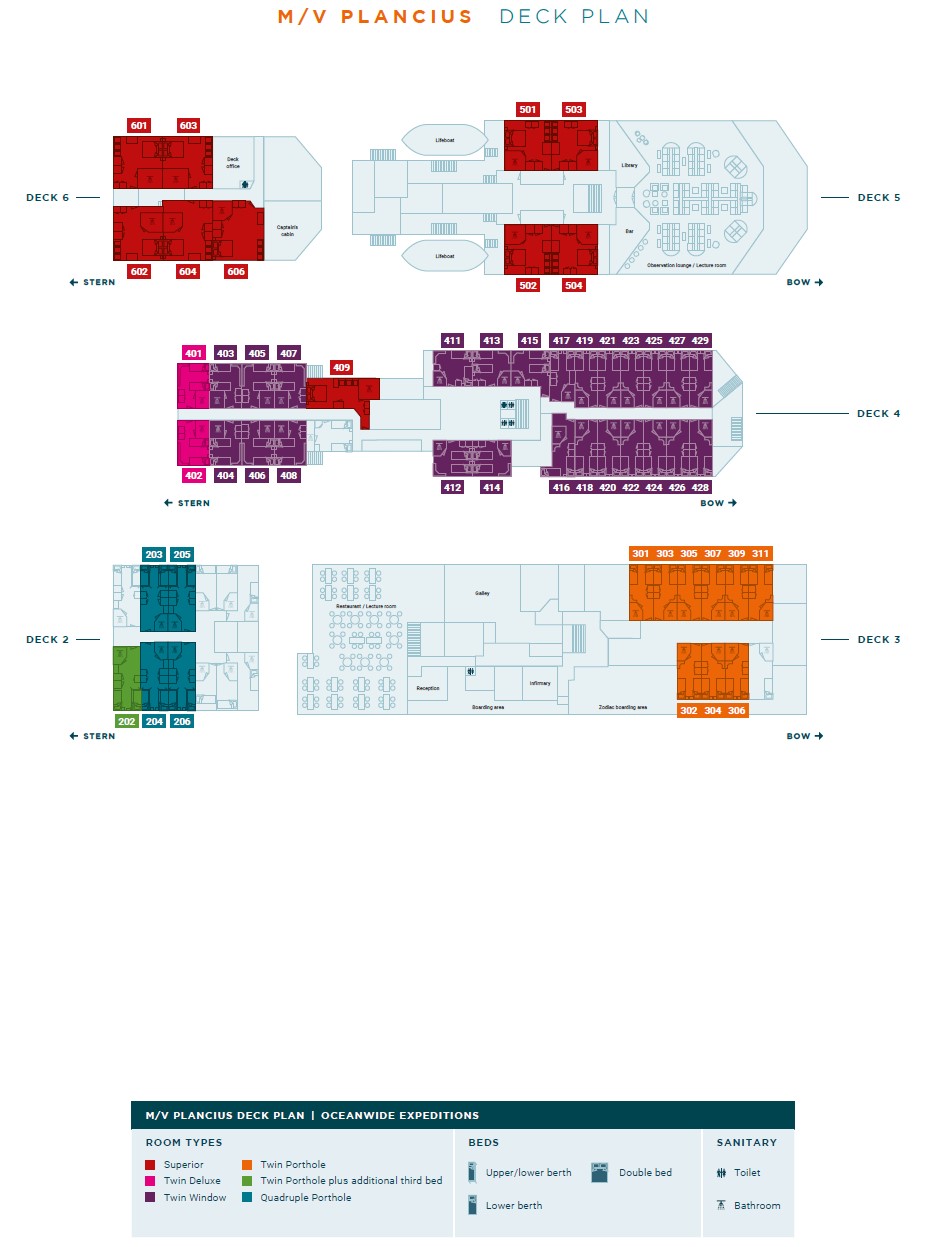
Inclusions & Exclusions
Inclusions:
- Voyage aboard the indicated vessel as indicated in the itinerary
- Scheduled flight from Narsarsuaq to Copenhagen
- All meals throughout the voyage aboard the ship including snacks, coffee and tea.
- All shore excursions and activities throughout the voyage by Zodiac.
- Program of lectures by noted naturalists and leadership by experienced expedition staff.
- Free use of rubber boots and snowshoes.
- Transfers and baggage handling between the airport, hotels and ship only for those passengers on the group flights to Longyearbyen.
- Transfers and baggage handling between the ship and the airport Narsarsuaq for those passengers on the flight to Copenhagen.
- All miscellaneous service taxes and port charges throughout the programme.
- AECO fees and governmental taxes.
- Comprehensive pre-departure material.
Exclusions:
- Any airfare, whether on scheduled or charter flights
- Pre- and post- land arrangements.
- Passport and visa expenses.
- Government arrival and departure taxes.
- Meals ashore.
- Baggage, cancellation and personal insurance (which is strongly recommended).
- Excess baggage charges and all items of a personal nature such as laundry, bar, beverage charges and telecommunication charges.
- The customary gratuity at the end of the voyages for stewards and other service personnel aboard (guidelines will be provided).
